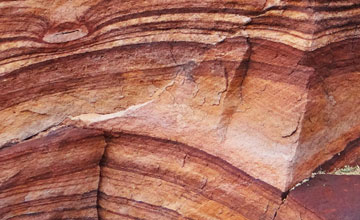
Nadine Chelsea Sutcliffe
- Courses1
- Reviews1
- School: University of Toronto
- Campus: St. George Campus
- Department: Geology
- Email address: Join to see
- Phone: Join to see
-
Location:
Toronto, ON - Dates at University of Toronto: December 2017 - December 2017
- Office Hours: Join to see
Biography
University of Toronto St. George Campus - Geology
Resume
2009
Doctor of Philosophy - PhD
Thesis title - Strontium stable isotope behaviour accompanying melting and magmatism in the Earth - Moon system\n\nHigh-precision analysis of non-traditional isotopes in high-temperature cosmochemistry.
Geochemistry and cosmochemistry
University of Oxford
2005
MSci
Awarded the Illing Prize for Outstanding Achievement in Petroleum Geoscience
Geological and Earth Sciences/Geosciences
Imperial College London
1st Class with Honours
Trained as a Wikipedia Fellow to write and edit Wikipedia articles to promote women in STEM.\n\nhttps://wikiedu.org/blog/2019/03/06/experimenting-with-wikipedia-as-a-woman-in-stem/\n\nhttps://wikiedu.org/blog/2018/11/08/scientists-to-write-wikipedia-biographies-of-women-in-stem/
Wiki Education Foundation
Public Outreach
Presentation Skills
Earth Science
Lecturing
Isotope Geochemistry
Hydrogeology
Manuscript reviewing and editing
Problem Solving
Project Management
Geochemistry
Scientific Writing
Data Collection
Science Outreach
Team Leadership
Geochronology
Research
Data Analysis
Science Communication
Mass Spectrometry
Nuclear Waste Management
Improving paleohydrological and diagenetic reconstructions in calcite veins and breccia of a sedimentary basin by combining Δ47 temperature
δ18Owater and U-Pb age
Improving paleohydrological and diagenetic reconstructions in calcite veins and breccia of a sedimentary basin by combining Δ47 temperature
δ18Owater and U-Pb age
U-Pb ages have been measured on secondary dolomite and silica cements in Cambrian sandstone at the base of an 840 m thick sub-horizontally bedded sedimentary sequence beneath the Bruce nuclear site in southern Ontario to document the history of fluid movement. Results show an average U-Pb age of 320 ± 10 Ma. The initial common Pb end member is slightly but distinctly enriched in 206Pb compared to that in older and younger calcite cements elsewhere within the sedimentary section. Combined with previous hydro-geochemical and fluid inclusion studies on the same rocks
the age is interpreted to record episodic migration of a saturated hydrothermal brine. Previously dated calcite cement in sub-horizontal fractures about 500 m higher in the stratigraphic section near the base of the Silurian sequence records similar U-Pb ages of 318 ± 10 Ma by LA-ICPMS and 313 ± 1 Ma by ID-TIMS. We suggest that the subhorizontal fractures were generated by slumping that resulted from dissolution of underlying evaporite deposits. These ages overlap with the peak of plutonism in the Alleghanian mountains
which were being uplifted contemporaneously 500 km to the southeast. Results suggest transport of hydrothermal brine from areas of crustal melting through the deep Cambrian sandstone aquifer while
at higher crustal levels
meteoric water was also driven over equally large distances by hydraulic gradients from the Alleghanian mountains.
Hydrochronology of a proposed deep geological repository for Low and Intermediate nuclear waste in southern Ontario from U-Pb dating of secondary minerals: Response to Alleghanian events
The relative abundances of resolved 12CH2D2 and 13CH3D and mechanisms controlling isotopic bond ordering in abiotic and biotic methane gases
A record of fluid flow has been documented within a Paleozoic carbonate platform sequence by U-Pb dating of calcite in veins and vugs from rock core sampled through a shallowly dipping sequence of sedimentary rocks beneath the Bruce nuclear site
Ontario
Canada. Secondary calcite from >650 m deep Ordovician carbonate rocks yields a Silurian age of 434 ± 5 Ma possibly related to infiltration of seawater from overlying evaporitic basins as well as hydrothermal solutions that infiltrated from below. In contrast
near-surface Devonian rocks mostly give vein infill ages over the range 80-100 Ma with evidence for younger infill down to 50 Ma. Vein calcite samples previously dated from surface outcrops of Ordovician carbonate exposed up to 500 km to the east yield similar U-Pb ages. Coincidence of near-surface vein calcite ages indicates widespread vein emplacement synchronous with a change in direction of motion of the North American plate as well as possible erosional unroofing following passage of the region over the Great Meteor hot spot ca. 125 Ma ago. Deeper carbonate formations have remained apparently impermeable to post-Paleozoic disturbance despite these perturbations.
Hydrochronology of a proposed deep geological repository for low and Intermediate level nuclear waste in southern Ontario from U-Pb dating of secondary minerals: Response to Silurian and Cretaceous events
The Jurassic clay-rich aquitard sequence underlying the Swiss Molasse Basin is locally penetrated by unusually frequent veins consisting of calcite ± celestite
in particular in the Schlattingen-1 and Oftringen drill cores. The veins are linked to extensional brittle structures
with shear senses ranging between dip-slip and strike-slip. Deformation triggered transient and localised events of fluid flow within the aquitard followed by sealing of the structures by the vein minerals. Vein calcite was dated by LA-ICP-MS analysis using the U/Pb method. While this was a demanding undertaking
given the low U and high common Pb contents of calcite
9 significant ages could be obtained. Two groups of ages can be distinguished
namely 31–39 and 11–18 Ma. Both age groups are consistent with the known regional tectonic evolution. The older age group corresponds to the main phase of rifting in the Upper Rhine Graben
a major crustal discontinuity
whose effects were not limited to the graben proper but affected large parts of the Molasse Basin.
Veins in clay-rich aquitards as records of deformation and fluid-flow events in northern Switzerland
Tracing ancient hydrogeological fracture network age and compartmentalisation using noble gases
Precambrian Shield rocks host the oldest fracture fluids on Earth
with residence times up to a billion years or more. Water-rock reactions in these fracture systems over geological time have produced highly saline fluids
which can contain mM concentrations of H2. Mixing of these ancient Precambrian fluids with meteoric or palaeometeoric water can occur through tectonic fracturing
providing microbial inocula and redox couples to fuel blooms of subsurface growth. Here
we present geochemical and microbiological data from a series of borehole fluids of varying ionic strength (0.6 M to 6.4 M) from Thompson Mine (Manitoba) within the Canadian Precambrian Shield. Thermodynamic calculations demonstrate sufficient energy for H2-based catabolic reactions across the entire range of ionic strengths during mixing of high ionic strength fracture fluids with meteoric water
although microbial H2 consumption and cultivable H2-utilizing microbes were only detected in fluids of ≤ 1.9 M ionic strength. This pattern of microbial H2 utilization can be explained by the greater potential bioenergetic cost of organic osmolyte synthesis at increasing ionic strengths. We propose that further research into the bioenergetics of osmolyte regulation in halophiles is warranted to better constrain the habitability zones of hydrogenotrophic ecosystems in both the terrestrial subsurface
including potential future radioactive waste disposal sites
and other planetary body crustal environments
including Mars.
Bioenergetic Constraints on Microbial Hydrogen Utilization in Precambrian Deep Crustal Fracture Fluids
Methane is a key component in the global carbon cycle with a wide range of anthropogenic and natural sources. Although isotopic compositions of methane have traditionally aided source identification
the abundance of its multiply-substituted \"clumped\" isotopologues
e.g.
(13)CH3D
has recently emerged as a proxy for determining methane-formation temperatures; however
the impact of biological processes on methane's clumped isotopologue signature is poorly constrained. We show that methanogenesis proceeding at relatively high rates in cattle
surface environments
and laboratory cultures exerts kinetic control on (13)CH3D abundances and results in anomalously elevated formation temperature estimates. We demonstrate quantitatively that H2 availability accounts for this effect. Clumped methane thermometry can therefore provide constraints on the generation of methane in diverse settings
including continental serpentinization sites and ancient
deep groundwaters. Copyright © 2015
American Association for the Advancement of Science.
Methane cycling. Nonequilibrium clumped isotope signals in microbial methane
Chelsea
Sutcliffe
Natural Sciences and Engineering Research Council of Canada (NSERC)
University of Toronto
Jack Satterly Geochronology Laboratory
I use high precision U-Pb geochronology to age date fracture minerals and investigate the hydrogeology of proposed sites for the safe disposal of radioactive waste
partnered with the Nuclear Waste Management Organization (NWMO). \nAge dating zircons for exploration geology with the Ontario Geological Survey
Quebec Survey
and multiple academic partners and institutions.
Postdoctoral Research Fellow
University of Toronto
Postdoctoral Fellow of the Canadian Astrobiology Training Program (CATP)
first Canadian cross-disciplinary
multi-institutional undergraduate
graduate and postdoctoral training program in Astrobiology. NSERC CREATE.
Natural Sciences and Engineering Research Council of Canada (NSERC)
University of Toronto
Toronto
- Design
develop and execute new geochemical research projects focused on LA-ICP-MS and TIMS analyses for 1) fracture infill studies for site investigations to assess the suitability for hosting a deep geological repository for intermediate-level nuclear waste
2) geochronological analyses of the Canadian Shield
and 3) mineral investigation. \n- Interpret raw geoscientific data for publication in peer-reviewed journals and present research findings at conferences and meetings.
Research Associate
Stable Isotope Laboratory
Investigated the geochemistry of ancient saline fracture fluids in the Precambrian Shield. Used stable C
H
and O isotopes and gas source mass spectrometry to understand the provenance of crustal fluids.\nResearch highlighted in the New Scientist
BBC
CBC
and published in Science.
Postdoctoral Research Fellow
University of Toronto
Create and implement course syllabi and assessments for both undergraduate and graduate level science courses. \nDesign and deliver lectures and seminars to undergraduates and graduates. \nResponsible for the improvement of courses based on student evaluations and feedback.
University of Toronto
Wiki Education
Selected to participate in a course to train scholars as Wikipedia Fellows with the skills to write and edit Wikipedia articles to promote women in STEM.\n\nhttps://wikiedu.org/blog/2018/11/08/scientists-to-write-wikipedia-biographies-of-women-in-stem/
Wikipedia Fellow Volunteer
English
Spanish
Illing Prize
Outstanding achievement
awarded upon graduating.
Imperial College London
